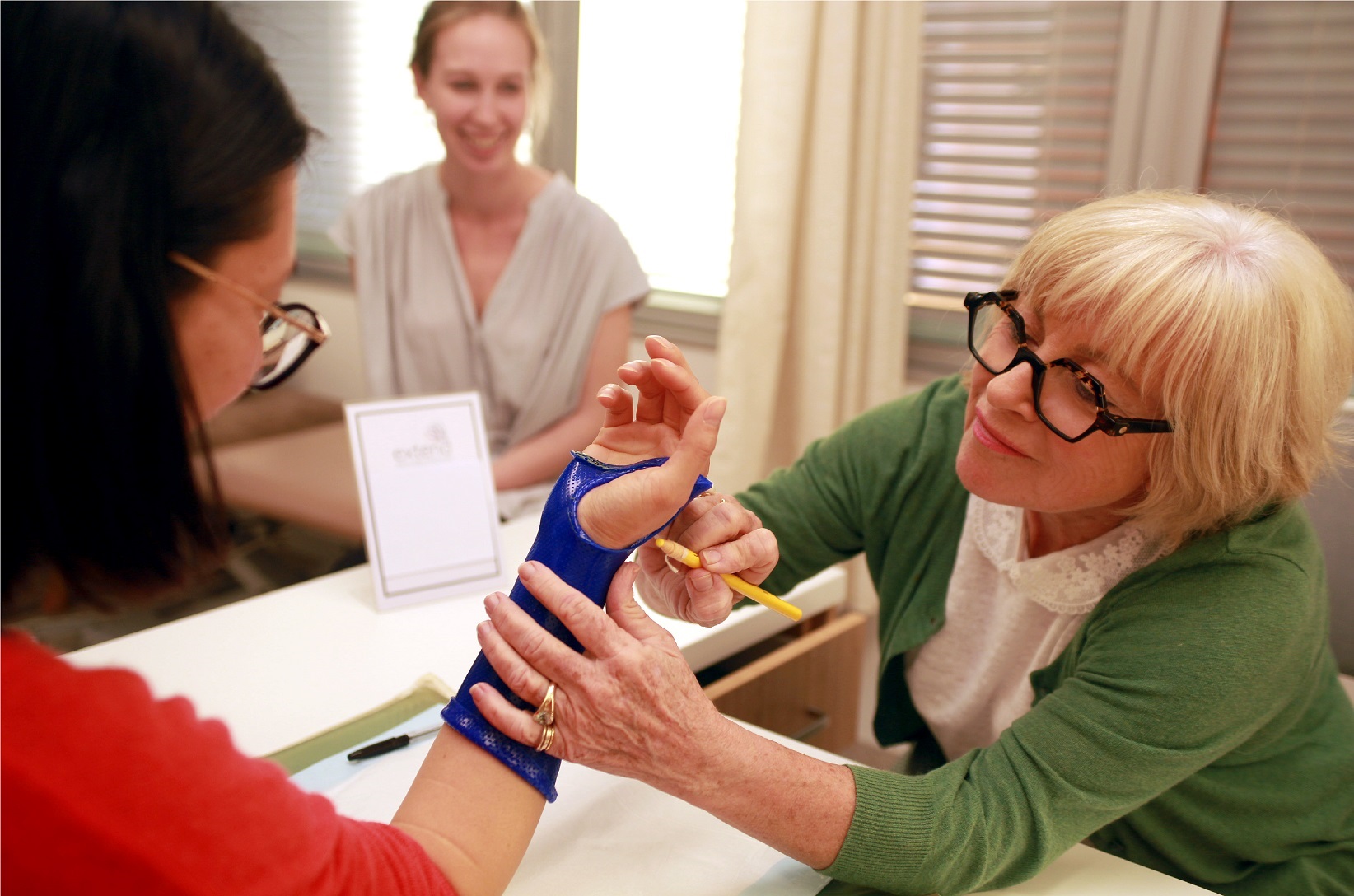Glasgow C, Fleming J, Tooth LR, and Peters SE.
American Journal of Occupational Therapy 2012; 66(2):243-248.
DOI: 10.5014/ajot.2012.002816
Objective: Capener splinting is a common treatment for extension deficit of the proximal interphalangeal (PIP) joint.This study compared the effect of daily splint total end range time (TERT) of 6–12 hr
versus 12–16 hr.
Method: Twenty-two participants with extension deficits of the PIP joint were randomly allocated to a daily TERT of 6–12 hr or 12–16 hr. Progress after 8 wk of splinting was evaluated.
Results: No significant difference was found in change in extension range of motion (ROM) between groups (active ROM, F [4, 17] 5 2.19, p 5 .13; passive ROM, F [4, 17] 5 0.95, p 5 .46; torque ROM, F [4, 17]51.49, p5.26). Considerable crossover between groups resulted in a similar average daily TERT (9.5 hr for the 6–12 hr group vs. 11.5 hr for the 12–16 hr group).
Conclusion: Further research with a larger sample is needed to determine whether longer daily TERT is beneficial. Our results suggest, however, that most patients find it difficult to wear splints >12 hr/day.




